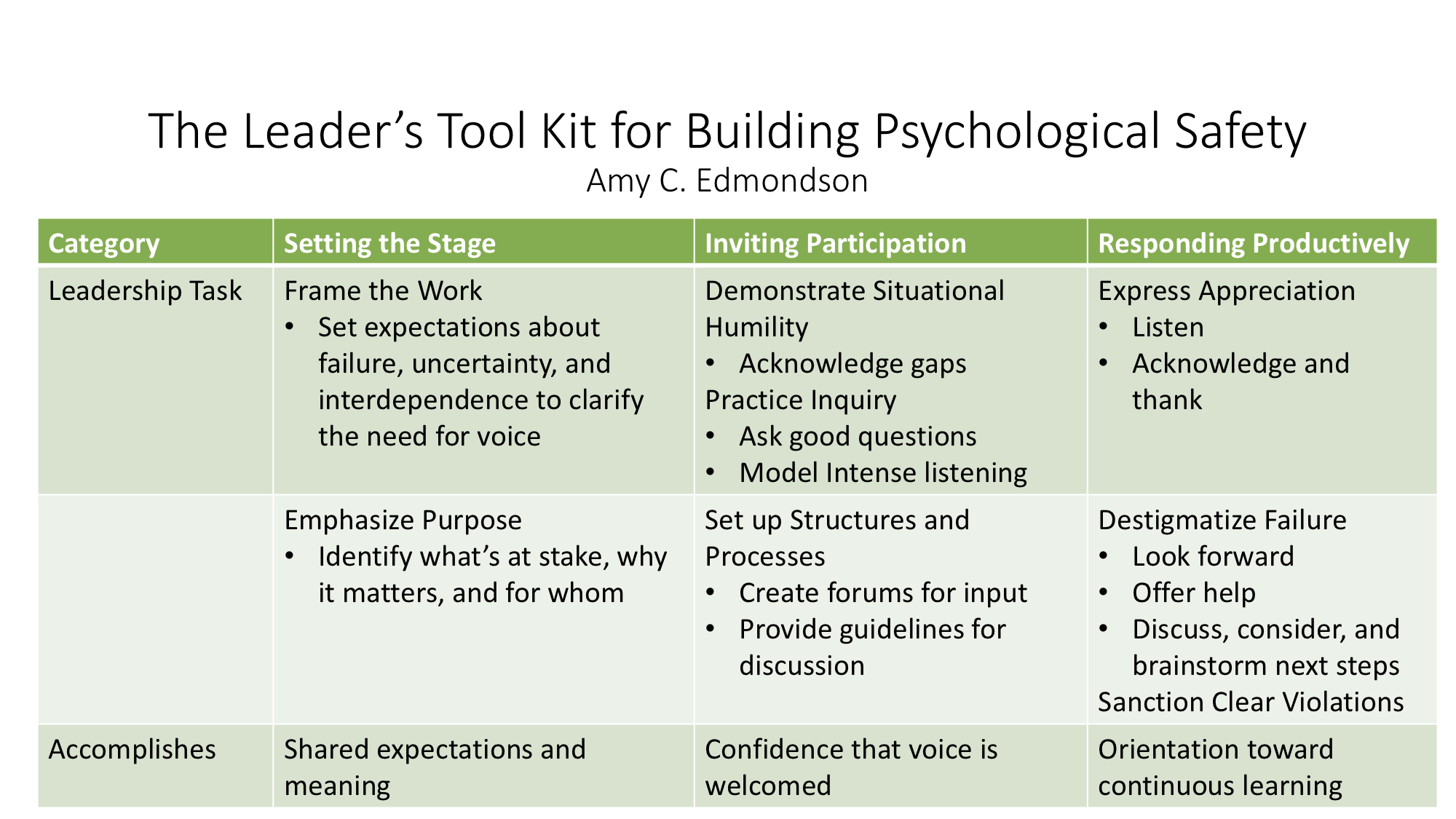Are you fearless at work? Or do you hold back, protect yourself from exposure? How about your organization more broadly? I am often struck how organization’s ability to innovate, to collaborate, or to drive the business is hindered by the conditions in which they try to do these things. They are not set up for success because the organization operates (perhaps you operate), out of unspoken fear. So, you stay quiet instead of saying something. Perhaps you are new, not as high up, gunning for that next promotion, so its best not rock the boat. But what if you felt as if you could bring your full capacities to work and speak truth at all times?
Amy C. Edmondson explores in her new book, “The Fearless Organization”, the potential of creating the conditions for people to fully engage. The cornerstone concept is creating psychological safety at work. Psychological safety is present when colleagues trust and respect one another enough to speak truth, to be candid. When it is present, an organization can have productive disagreements that advance the organization’s ability to speak and hear truth and make well informed decisions. Psychological safety is necessary, but not sufficient, to deliver a learning and high performing organization. It “makes it possible for other drivers of success (talent, ingenuity, diversity of thought) to be expressed in ways that influence how work gets done. ” (Edmondson, pg. 197).
I have seen psychological safety’s power in leveraging Design Thinking. One of the secret ingredients in the work I do with teams is to design the work in a way that builds psychological safety so that candor and truth are present and the team can make well informed choices. When psychological safety is present, teams don’t make avoidable failures, because the deadly silence that can deny an organization’s wisdom is overcome. In her book Edmondson profiles several example companies who have suffered silence and fear and those who have built the psychological safety at work to embrace candor leading to success. She acknowledges that “we all go through an implicit decision making process, weighing the benefits and costs of speaking up…the benefits are often unclear and delayed…while the costs are tangible and immediate.” (Edmondson, pg. 82). I’ve been there and I bet you have too. Should I or shouldn’t I speak up? Early in my career, I was in a meeting for a go/no go decision on a new brand and I was the lowest ranked person in the room. The fact that the manufacturing system was not reliably creating product that met standards was not said until near the end of the meeting, when I spoke up. I was punished for weeks by my management about speaking up until the product launched and failed due to manufacturing quality issues. The business unit I was a part of at that time did not have psychological safety at work and the result was a very public, expensive and avoidable failure. It took me a while to recover from that experience and to feel safe enough to be candid again. What are you doing, or not doing, in your organization to build psychological safety? Edmondson outlines several productive things to build this safety and set the conditions for the organization to succeed. See chart from Edmondson’s book on the Leader’s Toolkit at the end of this post. If you are leading a team or an organization, start paying attention to what you can do to invite candor, truth and trust. Your team, and the the results they are able to achieve, will be worth the effort.
Cindy Tripp
Take Action
1)Monitor your own internal voice…is it quieting you? Why? Consider what would happen if you spoke up? How can you begin role modeling candor and courage in your organization?
2)Reflect on how you respond to candor, criticism. Do you react or do you become genuinely curious?Try on curiosity this month and see what happens.
3)Read Edmondson’s book for more insight and tips to help fuel your ability to cultivate psychological safety at your employer so that your team’s talents, diversity and ingenuity can flourish.




Cindy
Well done–and so true.
Thanks for sharing this blog.
Dick